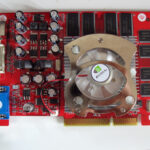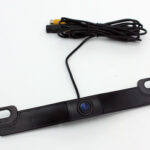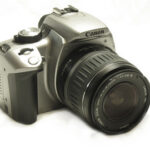I have a Sony Cybershot DSC W7, which uses a removable flash memory card. The memory card made by Sony for this product is a Sony memory stick. However, I have found a less expensive and just as reliable version, the memory stick pro. The memory stick pro duo can also be used for this camera, with the use of an adapter that is usually sold with the product for no extra charge. The memory stick pro and pro duo are available with different amounts of storage capacity, depending on the price you want to spend and perhaps for your intended uses. The photos and videos stored on the memory stick pro and duo are easily transferred to a pc or printer. These memory sticks have proven to be very reliable and have become more affordable over time.
Memory Stick Pro versus Pro Duo
Originally, I always purchased the memory stick pro device for use with my camera. I have never bought the sony memory stick, because these have always been a bit more expensive. The memory stick pro when I first got my camera in November of 2005 usually was sold in 256 MB, 512 MB or 1 GB. I made the mistake once of buying the 256 MB, but realized this was a mistake. It didn’t hold much data. I sing karaoke and like to record myself performing, and I was only able to record two songs with this amount of storage. I quickly began buying the 1 GB, which holds about 325 pictures taken with my 7.2 megapixel camera, or about 40 minutes of pure recording time for video. The amount of pictures that can be taken varies depending on the megapixels of the camera and the amount of megapixel used to take each picture. Today, I will only purchase a 2 GB or 4 GB.
Originally, I purchased the memory stick pro’s by SanDisk at Circuit City. The price was always better than buying the Sony Memory Stick. However, I soon found that many discount websites on the internet sell the SanDisk products for less than what I found in the store. For intance, ecost.com has one of the best prices. Notably, however, often Circuitcity.com has specials that compete with the other discount websites. You order online and then pick up in the store.
One change that has happened in the past year is that the memory stick pro is being replaced with the pro duo. This is because the cameras being made now use the pro duo and not the pro. The discount websites still carry the pro, including the SanDisk website itself. But Circuit City is mainly only carrying the pro duo. Interestingly, the pro still shows as being sold on the website, but then when you try to order it for store pickup, which is the only option, no stores carry it anymore.
The pro duo is just as reliable and efficient for the Sony Cybershot camera anyway. The only difference is that the pro duo is smaller, and so needs to be placed in an adapter to fit into the camera properly. The adapter comes with the product generally. It is easy to use the adapter, and so far I haven’t seen any problems develop such as reliability. The pro duo is a high speed device, but with an older camera the higher speed may not be accessible. It hasn’t seemed to be with my camera.
Capacity of Storage
The memory stick pro and pro duo are now both made up to 8 GB, but I have only been able to find 4 GB available, and this is generally only on the internet and not in stores. I even went to the San Disk website and was only able to find up to 4 GB. The 4 GB pro or pro duo sells for about $99 through the San Disk website, which is a good price. I remember paying $70 for the 1 GB about a year ago. The prices seem to be dropping.
When choosing the size, the range is from 256 MB to 4 GB, that you will be able to find to purchase. The 4 GB is great for vacations, etc., because it will hold about 1300 pictures or 2 hours of video on a 7.2 megapixel camera. I would also recommend the 2 GB, but going much smaller will force you to change memory sticks often if you are like me and take pictures of everything!
Transferring Pictures and Video
So, once you have taken pictures and used up all the capacity, then what? There are many options. You can take the memory stick to Walmart, and give it to them and they can make prints from it. Or, you can pop the stick into a machine at Walmart, and choose exactly which pictures you want prints of and load it, and then wait an hour for them to develop it. Best of all, though, you can do it yourself at home with a computer or printer. To do this, you must have a media card reader that has the size of a memory stick. My Dell computer has a 13-in-1 media card reader, so it takes almost any size of memory card. My Canon printer also has a memory card reader for the memory stick. I just pop the stick into the computer or printer, and can make prints directly! With my Dell, I also can store the photos. I load the photos from the memory stick, and then save them to my hard drive. I am lucky enough to have a CD burner as well, so I can transfer the photos and from the memory stick to a CD. After transferring the photos and video, you can then delete the pictures on the memory stick and use it over. I have to say, I haven’t yet erased any of mine, but this would be a much cheaper option. The photos can be deleted by placing the stick back in the camera, and then deleting pictures from a function on the camera.
Recommendation and Conclusion
I haven’t had any problems using the SanDisk memory stick pro or pro duo. Both are reliable and easy to use. Both fit into the standard memory stick slot in media card readers on computer and printers, and photo shop devices like at Walmart. The varying amounts of memory available are useful to fit my spending budget. The memory stick can be used over and over again, by transferring the pictures onto a CD or a computer hard drive, and then deleting what was stored on the memory stick. I highly recommend both of these products for my digital camera memory needs!



